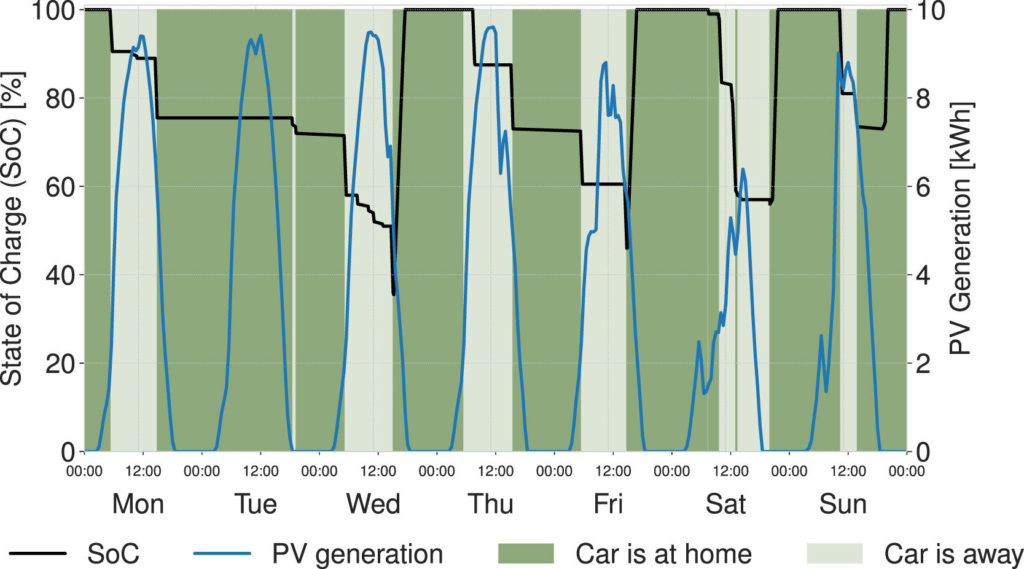
photovoltaics tagged posts


Lightweight and flexible perovskites are highly promising materials for the fabrication of photovoltaics. So far, however, their highest reported efficiencies have been around 20%, which is considerably lower than those of rigid perovskites (25.7%).
Researchers at Nanjing University, Jilin University, Shanghai Tech University, and East China Normal University have recently introduced a new strategy to develop more efficient solar cells based on flexible perovskites. This strategy, introduced in a paper published in Nature Energy, entails the use of two hole-selective molecules based on carbazole cores and phosphonic acid anchoring groups to bridge the perovskite with a low temperature-processed NiO nanocrystal film.
“We believe that lightweight flexible perovskite solar cells ar...
Read More
An electric car that runs on PV power sounds appealing. But is it really possible to enjoy flexibility with a vehicle charged through a home photovoltaic system? An ETH research team has reached some surprising conclusions.
The area of photovoltaics (PV) is rapidly increasing in popularity, and in Switzerland it already covers 5 percent of the country’s electricity consumption...
Read More
Researchers can now grow twistronic material at sizes large enough to be useful. While an exciting potential area of nanotechnology, twistronics until now has mostly been explored on samples smaller than human hairs. Now researchers can produce samples on the centimetre scale.
2D materials, which consist of a single layer of atoms, have attracted a lot of attention since the isolation of graphene in 2004...
Read More





Recent Comments